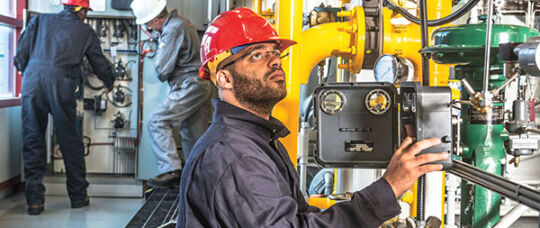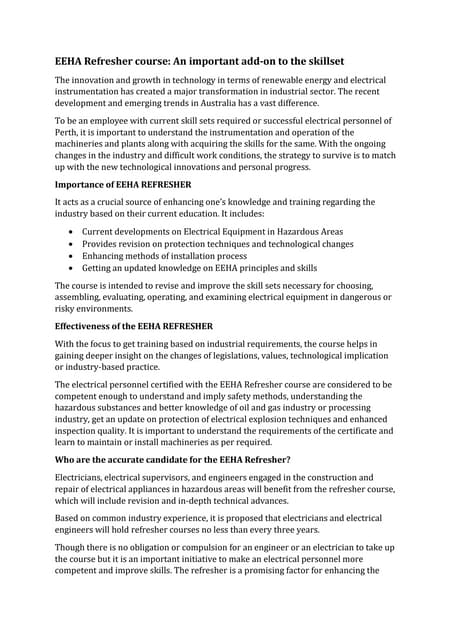Not known Details About Roar Solutions
Not known Details About Roar Solutions
Blog Article
The Best Strategy To Use For Roar Solutions
Table of ContentsThe 20-Second Trick For Roar SolutionsRoar Solutions for BeginnersRoar Solutions Things To Know Before You Get This
In order to shield setups from a possible explosion an approach of evaluating and classifying a possibly hazardous location is needed. The objective of this is to make sure the appropriate selection and setup of devices to ultimately protect against an explosion and to make certain security of life.
(https://www.anobii.com/en/01749dcc41232b575a/profile/activity)
No devices needs to be mounted where the surface area temperature level of the tools is higher than the ignition temperature of the offered threat. Below are some typical dirt hazardous and their minimum ignition temperature. Coal Dust 380C 225C Polythene 420C (melts) Methyl Cellulose 420C 320C Starch 460C 435C Flour 490C 340C Sugar 490C 460C Grain Dust 510C 300C Phenolic Resin 530C > 450C Aluminium 590C > 450C PVC 700C > 450C Soot 810C 570C The likelihood of the threat being present in a concentration high enough to trigger an ignition will certainly vary from location to place.
Dangerous location electric tools possibly designed for usage in greater ambient temperatures. Field Fixing By Authorised Personnel: Challenging screening might not be needed nonetheless details procedures may need to be followed in order for the tools to keep its third celebration rating. Each piece of equipment with a hazardous ranking need to be reviewed individually.
The Buzz on Roar Solutions
The devices register is an extensive data source of tools documents that consists of a minimum set of fields to identify each item's area, technical specifications, Ex-spouse classification, age, and environmental information. This info is crucial for monitoring and managing the equipment successfully within hazardous locations. In contrast, for routine or RBI sampling inspections, the quality will be a mix of Comprehensive and Close inspections. The proportion of Detailed to Close inspections will certainly be determined by the Devices Threat, which is examined based upon ignition risk (the probability of a resource of ignition versus the probability of a flammable ambience )and the dangerous area category
( Area 0, 1, or 2). This variation will certainly additionally influence the resourcing demands for work preparation. When Whole lots are specified, you can create tasting strategies based on the sample size of each Whole lot, which describes the variety of arbitrary equipment items to be examined. To figure out the required sample size, two facets require to be reviewed: the dimension of the Whole lot and the category of examination, which suggests the degree of initiative that should be applied( reduced, typical, or raised )to the examination of the Lot. By combining the category of assessment with the Great deal dimension, you can then establish the suitable rejection standards for an example, meaning the allowable variety of malfunctioning products discovered within that example. For even more information on this process, please describe the Power Institute Standards. The IEC 60079 standard advises that the optimum period in between inspections should not surpass three years. EEHA evaluations will likewise be conducted beyond RBI projects as part of arranged upkeep and equipment overhauls or fixings. These assessments can be credited toward the RBI example sizes within the influenced Great deals. EEHA examinations are conducted to identify faults in electric tools. A weighted scoring system is vital, as a single tool may have numerous faults, each with varying degrees of ignition threat. If the mixed score of both examinations is much less than twice the fault rating, the Whole lot is considered appropriate. If the Great deal is still taken into consideration undesirable, it should undergo a complete assessment or justification, which might set off more stringent assessment methods. Accepted Lot: The root causes of any type of faults are determined. If a common failing mode is located, additional equipment may call for maintenance. Faults are classified by intensity( Security, Integrity, Home cleaning ), guaranteeing that immediate issues are evaluated and resolved quickly to reduce any effect on safety and security or operations. The EEHA data source should track and tape the lifecycle of mistakes together with the rehabilitative activities taken. Carrying out a durable Risk-Based Inspection( RBI )method is essential for making certain compliance and security in taking care of Electric Tools in Hazardous Areas( EEHA) (Roar Solutions). Automated Mistake Rating and Lifecycle Monitoring: Easily manage faults and track their lifecycle to enhance inspection accuracy. The introduction of this assistance for risk-based examination further strengthens Inspectivity's position as a best-in-class service for governing conformity, in addition to for any asset-centric examination usage instance. If you want finding out more, we welcome you to ask for a demo and find exactly how our option can transform your EEHA administration procedures.
An Unbiased View of Roar Solutions

In regards to eruptive risk, an unsafe location is an environment in which an eruptive environment exists (or may be expected to be existing) in quantities that require unique safety measures for the construction, installment and use of equipment. Roar Training Solutions. In this write-up we check out the difficulties dealt with in the work environment, the risk control procedures, and the required expertises to work safely
It issues of modern life that we manufacture, save or take care of a range of gases or liquids that are deemed flammable, and a variety of dusts that are considered flammable. These materials can, in specific conditions, develop eruptive atmospheres and these can have significant and heartbreaking repercussions. A lot of us are acquainted with the More Bonuses fire triangle get rid of any type of among the 3 aspects and the fire can not take place, however what does this mean in the context of unsafe locations? When damaging this down right into its simplest terms it is essentially: a mix of a specific amount of release or leakage of a particular compound or product, combining with ambient oxygen, and the presence of a source of ignition.
In a lot of circumstances, we can do little concerning the levels of oxygen airborne, yet we can have considerable impact on sources of ignition, as an example electric equipment. Dangerous areas are documented on the harmful location classification illustration and are identified on-site by the triangular "EX-SPOUSE" sign. Below, among various other crucial details, areas are split into 3 types relying on the threat, the possibility and duration that an eruptive atmosphere will certainly exist; Area 0 or 20 is deemed one of the most hazardous and Zone 2 or 22 is deemed the least.
Report this page